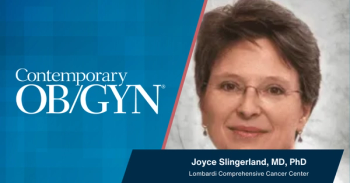
- Vol 68 No 04
- Volume 68
- Issue 04
Hormonal and nonhormonal therapy can improve menopause symptoms
A literature review found that although hormonal therapy with estrogen is the first-line therapy for bothersome vasomotor symptoms (VMS) and genitourinary syndrome of menopause (GSM) symptoms, nonhormonal medications such as paroxetine and venlafaxine can also be effective for VMS.
A literature review on managing menopausal symptoms found that although hormonal therapy with estrogen is the first-line therapy for bothersome vasomotor symptoms (VMS) and genitourinary syndrome of menopause (GSM) symptoms, nonhormonal medications such as paroxetine and venlafaxine can also be effective for VMS. However, the review in JAMA concluded that hormone therapy is not indicated for the prevention of cardiovascular disease.
“A high proportion of women experience bothersome vasomotor symptoms,” senior author Carolyn Crandall, MD, said. Crandall is a professor of medicine in the Division of General Internal Medicine and Health Services Research at the David Geffen School of Medicine at UCLA. “There is also increasing recognition that frequent vasomotor symptoms can last for more than 7 years in up to 50% of women.”
Crandall noted that genitourinary symptoms, especially dyspareunia, are expected to persist and even worsen rather than resolve. “Because of the proliferation of treatment options for menopausal symptoms, clinicians need guidance on how to select an appropriate treatment option and how to counsel patients on benefits and risks of treatment,” she said.
However, differences exist in available safety information on the spectrum of options. “For example, there is [a] lack of randomized controlled trial [RCT] data for stroke, heart attack, and breast cancer with transdermal preparations,” Crandall told Contemporary OB/GYN®. Furthermore, clinicians need to be aware of an important distinction between prescription bioidentical hormones and compounded bioidentical hormones and the potential consequence of that dissimilarity, according to Crandall.
The authors searched PubMed from inception through March 2022 for RCTs and systematic reviews and meta-analyses on the efficacy and safety of hormonal and nonhormonal medications for managing vasomotor and genitourinary symptoms. For managing vasomotor symptoms, the review comprised 108 RCTs, 17 systematic reviews, and 2 observational studies. For GSM, there were 46 RCTs, 4 systematic reviews, and 1 observational study.
The review concluded that systemic estrogen alone or combined with a progestogen reduces the frequency of vasomotor symptoms by approximately 75%. Oral estrogen and transdermal estrogen have similar efficacy.
Conjugated equine estrogens (CEEs) with or without medroxyprogesterone acetate (MPA) were the only hormonal treatments for which RCTs were designed to assess cardiovascular events, venous thromboembolism, and breast cancer risk. Compared with placebo, the increased risk of stroke and venous thromboembolism associated with CEE (with or without MPA) and breast cancer (with use of CEE plus MPA) is roughly 1 excess event per 1000 patient years. On the other hand, low-dose CEE plus bazedoxifene is not linked to increased risk of breast cancer: 0.25% per year vs 0.23% per year with placebo.
For women who are not candidates for hormonal treatments, nonhormonal approaches include citalopram, desvenlafaxine, escitalopram, gabapentin, paroxetine, and venlafaxine. These therapies reduce the frequency of vasomotor symptoms by approximately 40% to 65%.
Low-dose vaginal estrogen is associated with subjective improvement in GSM symptom severity by approximately 60% to 80%. Additionally, results showed improvement in severity of 40% to 80% with vaginal prasterone and improvement in severity of 30% to 50% with oral ospemifene
“The review offers practical advice on how to select among options, including in special settings such as women with medically and surgically induced menopause, with and without comorbidities,” Crandall said. She noted that compounded bioidentical hormones are not approved by the FDA. Therefore, “they should be avoided because they have not been evaluated for safety or effectiveness and are not monitored for quality.”
Conversely, if a patient prefers a bioidentical option, Crandall recommends prescription bioidentical hormones such as estradiol and progesterone, “which are identical to the hormones produced by the human body.” Meanwhile, cardiovascular and cancer outcomes for transdermal estrogen–containing preparations and long-term endometrial safety of vaginal estrogen therapies “have not been evaluated in high-quality, long-term, placebo-controlled RCTs,” she said.
Reference
Crandall CJ, Mehta JM, Manson JE. Management of menopausal symptoms: a review. JAMA. 2023;329(5):405-420. doi:10.1001/jama.2022.24140
Articles in this issue
over 2 years ago
Payment models put the value in value-based careover 2 years ago
How to manage endometriosis-associated painover 2 years ago
Underfunded and unacknowledgedover 2 years ago
Planned oocyte cryopreservationover 2 years ago
Kudos to WHOalmost 3 years ago
A look at access to contraception for the homelessalmost 3 years ago
Efficacy and safety of water-based personal lubricantsalmost 3 years ago
A look at vaginal laser surgery for overactive bladder syndromealmost 3 years ago
Azithromycin reduces risk of maternal sepsis, death in vaginal deliveryNewsletter
Get the latest clinical updates, case studies, and expert commentary in obstetric and gynecologic care. Sign up now to stay informed.











